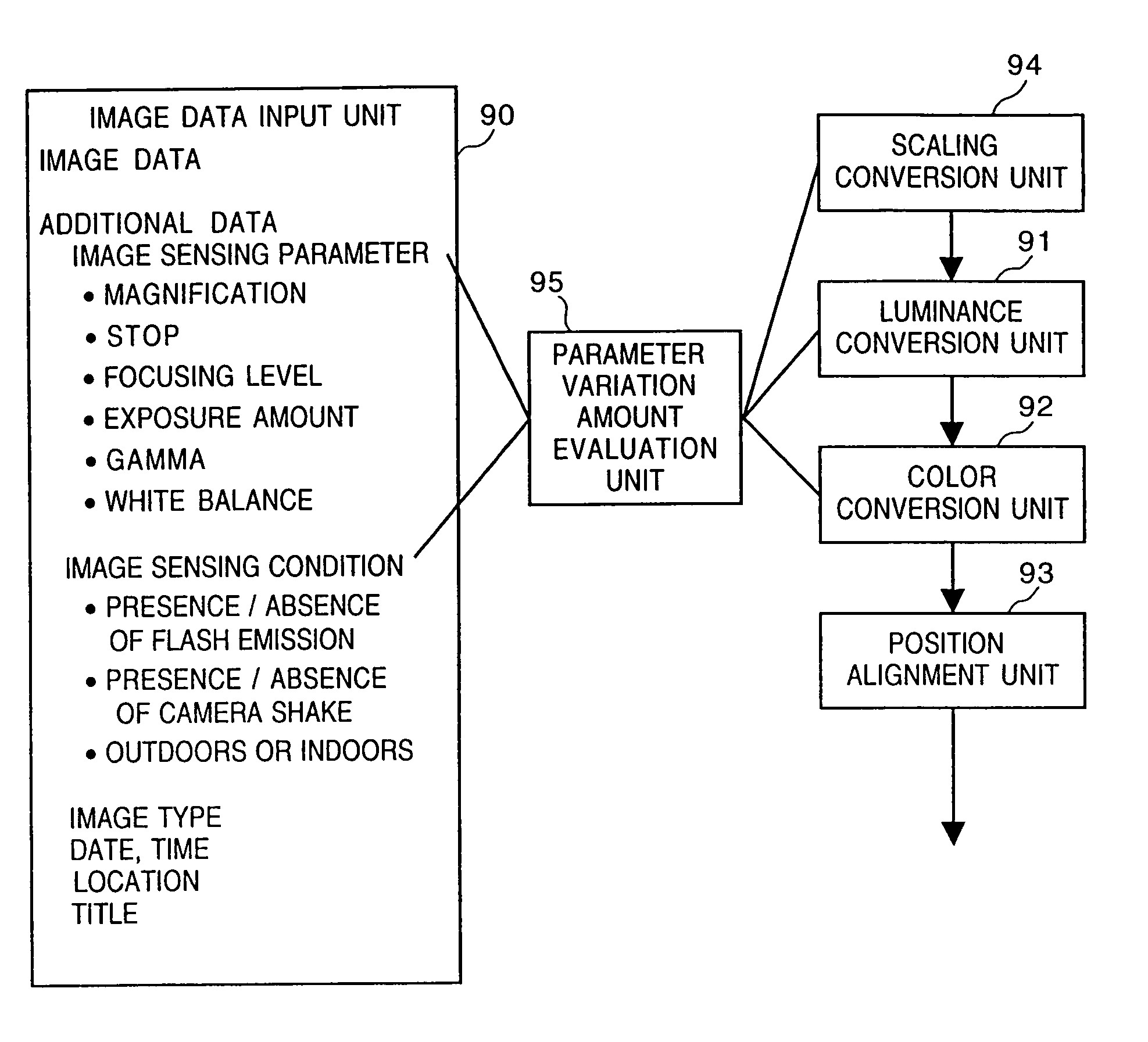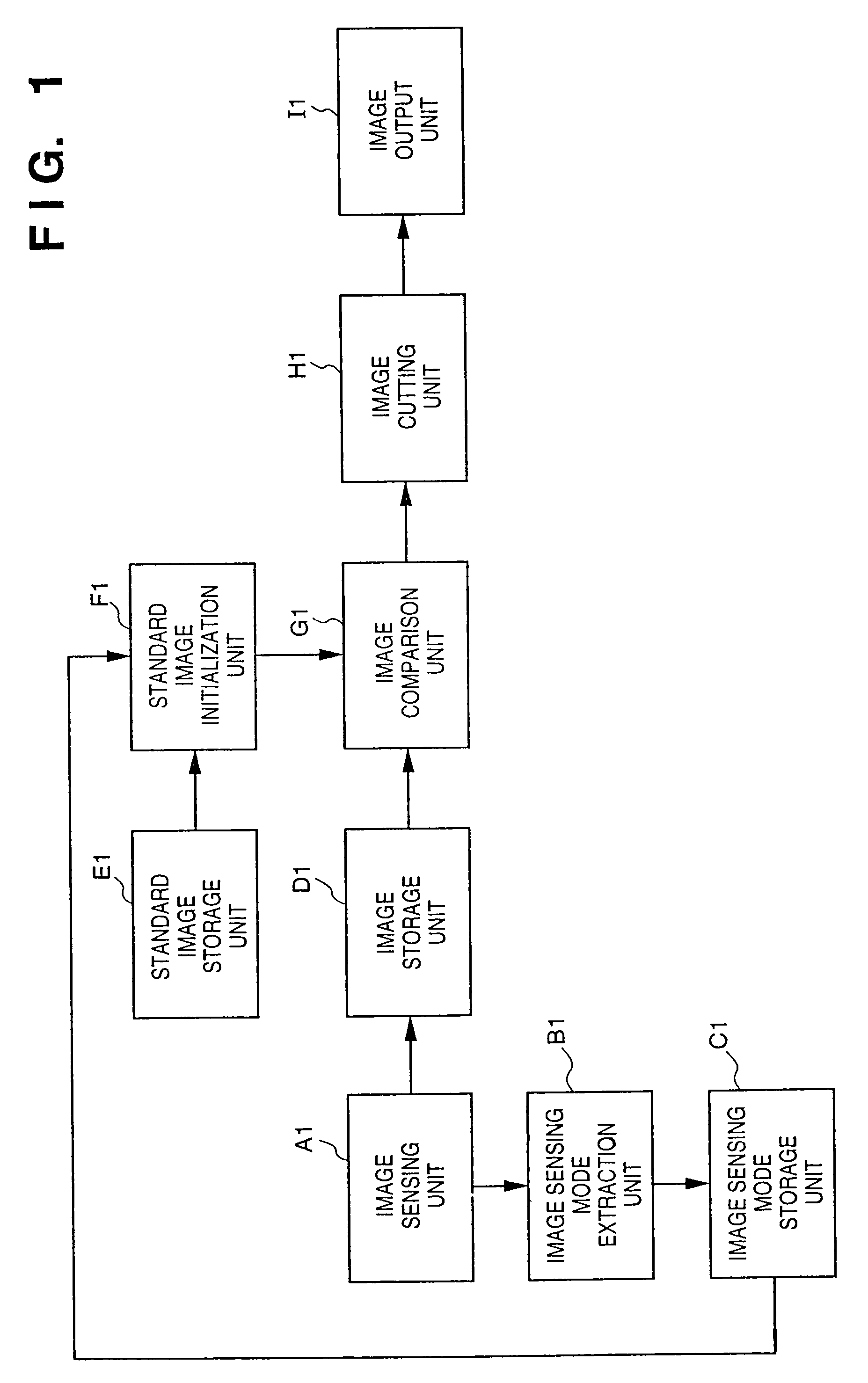Object extraction method, and image sensing apparatus using the method
a technology of object extraction and image sensing, applied in the field of object extraction method and image sensing apparatus using the method, can solve the problems of inability to realize conventional image processing methods, and inability to consider large calculation amount and long calculation time. to achieve the effect of high-speed search
- Summary
- Abstract
- Description
- Claims
- Application Information
AI Technical Summary
Benefits of technology
Problems solved by technology
Method used
Image
Examples
first embodiment
[0303]The first embodiment that uses images having different image sensing conditions will be explained. In this embodiment, as the control of the image sensing condition for image extraction, the focusing state is controlled by controlling the layout of the imaging optical system under the condition that the magnification is constant.
[0304]FIG. 10 is a block diagram showing the arrangement of principal part of a system of this embodiment. Reference numeral 201 denotes an image sensing unit arranged as the image input unit; and 202, an imaging optical system. Reference numeral 203 denotes a drive control unit for the imaging optical system. The unit 203 comprises a zoom motor, a focusing motor, a stop system control system, a shutter speed control unit, and the like.
[0305]Reference numeral 204 denotes an image sensor (typically, a CCD image sensing element); and 205, an image sensing parameter measurement control unit, which comprises a lens layout measurement unit (not shown; e.g.,...
second embodiment
[0340]an image sensing apparatus that uses images having different image sensing conditions will be described below with reference to FIG. 12.
[0341]In this embodiment, after an initial contour is extracted from two images having different focusing states as in the first embodiment, background image region removal processing (step S39) using the selection / indication unit 213 (e.g., a mouse) is interactively performed for a region in the initial contour. In this case, the processing mode automatically shifts from the initial contour extraction mode to the background image region removal mode.
[0342]When the image in the contour is displayed, the image may be normalized and displayed by appropriately scaling the image size to have a predetermined size independently of the extracted image size. In the background removal processing, the type of feature of image data used for discriminating the background image region, and the allowable range of the attribute value are set in advance using...
third embodiment
[0345]an image sensing apparatus that uses images having different image sensing conditions will be explained below.
[0346]In this embodiment, by controlling the diameter of the stop or the shutter speed of the image sensing unit (step S443), a plurality of images having different exposure conditions are sensed (step S444) and are normalized by extracting comparison (difference) data therefrom (step S445). Thereafter, the processing including the setting operation of the initial contour to image extraction is performed.
[0347]FIG. 13 shows the processing flow of this embodiment. In particular, in this embodiment, the normalization processing of the luminance levels of two image data is performed before comparison data is extracted. More specifically, one of two image data is normalized by a maximum luminance value (to be described below) of reference image data, so that the maximum luminance value of luminance levels having frequencies equal to or larger than a predetermined value in ...
PUM
 Login to View More
Login to View More Abstract
Description
Claims
Application Information
 Login to View More
Login to View More - R&D
- Intellectual Property
- Life Sciences
- Materials
- Tech Scout
- Unparalleled Data Quality
- Higher Quality Content
- 60% Fewer Hallucinations
Browse by: Latest US Patents, China's latest patents, Technical Efficacy Thesaurus, Application Domain, Technology Topic, Popular Technical Reports.
© 2025 PatSnap. All rights reserved.Legal|Privacy policy|Modern Slavery Act Transparency Statement|Sitemap|About US| Contact US: help@patsnap.com



